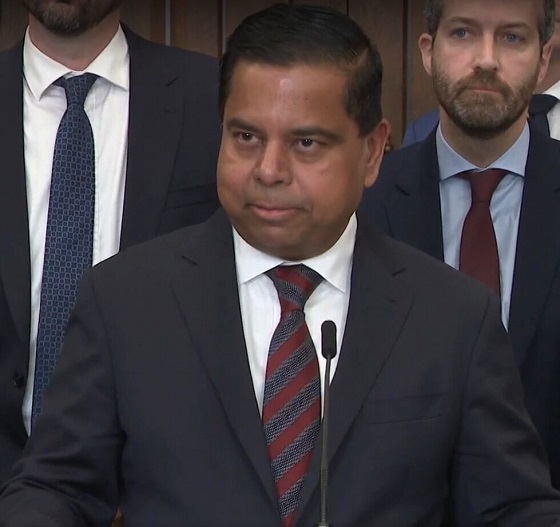Alberta
Alberta government should reform hospital funding to help shorten wait times

From the Fraser Institute
By Mackenzie Moir and Alicia Kardos
Other high-performing countries with universal health care (Australia, Germany, Switzerland) use “activity-based funding.” Under this model, hospitals receive funding based on the amount of care they provide.
Earlier this year, the Alberta Medical Association sounded the alarm on “rolling surgical outages,” patients diverted to other treatment sites, and the potential capping of services at major provincial hospitals. Unfortunately, the delays these problems create aren’t new to Albertans, as patients continue to face lengthy wait times.
According to the latest data, Albertan patients faced a median wait time of 33.5 weeks in 2022 for non-emergency medical treatment, a delay that was nearly six weeks longer than the national average, and three times longer than what patients in the province experienced in 1993 (when national estimates were first published).
When broken down, the wait in Alberta includes the first 16.4 weeks it takes for a patient to see a specialist after referral from their family doctor—then a second wait of 17.2 weeks to receive treatment after seeing that specialist. And these figures don’t account for the wait to see a GP in the first place, which is a significant issue in a rapidly growing province where remain without a family doctor.
Of course, we hear the predicable calls for more money. But in reality, spending more won’t get Albertans out of this problem. In a recent comparison of high-income countries with universal coverage, Canada (in 2021) was already one of the highest spenders on health care (as a share of their economy) while having some of the fewest doctors and hospital beds (after accounting for differences in population age among countries).
And when compared to nine other high-income countries in 2020, Canadians were found to have the longest waits for medical care. Specifically, Canadians were the least likely to report waiting under four months for non-emergency surgery (at 62 per cent) compared to higher-performing countries such as Australia (72 per cent), Switzerland (94 per cent) and Germany (99 per cent).
So what’s the solution?
In a word, reform. For example, Alberta could change the way it funds hospitals. Canada’s predominant approach is to provide hospitals a set amount of money each year, regardless of the level of services provided. This means that the money hospitals receive isn’t tied to the actual number of services they provide. This discourages hospitals from providing more care because each patient represents a drain on their budget rather than an opportunity.
In contrast, many other high-performing countries with universal health care (Australia, Germany, Switzerland) use “activity-based funding.” Under this model, hospitals receive funding based on the amount of care they provide. This creates a powerful incentive for hospitals to treat more patients, because each patient represents an opportunity for the hospital to earn more money.
Quebec decided in last year to fund all of its surgical procedures using this model, and now plans to expand the model to all hospital care by 2027/28. The Smith government has also taken some steps that lay the foundation for these types of reforms. This is good news for Albertans, if reform is actually on the way.
Across Canada, despite the availability of solutions, the status quo of long waits persists. Breaking from the past can be hard, but there may be hope on the horizon for patients in Alberta’s beleaguered and poorly performing health-care system.
Authors:
Alberta
Alberta’s grand bargain with Canada includes a new pipeline to Prince Rupert

From Resource Now
Alberta renews call for West Coast oil pipeline amid shifting federal, geopolitical dynamics.
Just six months ago, talk of resurrecting some version of the Northern Gateway pipeline would have been unthinkable. But with the election of Donald Trump in the U.S. and Mark Carney in Canada, it’s now thinkable.
In fact, Alberta Premier Danielle Smith seems to be making Northern Gateway 2.0 a top priority and a condition for Alberta staying within the Canadian confederation and supporting Mark Carney’s vision of making Canada an Energy superpower. Thanks to Donald Trump threatening Canadian sovereignty and its economy, there has been a noticeable zeitgeist shift in Canada. There is growing support for the idea of leveraging Canada’s natural resources and diversifying export markets to make it less vulnerable to an unpredictable southern neighbour.
“I think the world has changed dramatically since Donald Trump got elected in November,” Smith said at a keynote address Wednesday at the Global Energy Show Canada in Calgary. “I think that’s changed the national conversation.” Smith said she has been encouraged by the tack Carney has taken since being elected Prime Minister, and hopes to see real action from Ottawa in the coming months to address what Smith said is serious encumbrances to Alberta’s oil sector, including Bill C-69, an oil and gas emissions cap and a West Coast tanker oil ban. “I’m going to give him some time to work with us and I’m going to be optimistic,” Smith said. Removing the West Coast moratorium on oil tankers would be the first step needed to building a new oil pipeline line from Alberta to Prince Rupert. “We cannot build a pipeline to the west coast if there is a tanker ban,” Smith said. The next step would be getting First Nations on board. “Indigenous peoples have been shut out of the energy economy for generations, and we are now putting them at the heart of it,” Smith said.
Alberta currently produces about 4.3 million barrels of oil per day. Had the Northern Gateway, Keystone XL and Energy East pipelines been built, Alberta could now be producing and exporting an additional 2.5 million barrels of oil per day. The original Northern Gateway Pipeline — killed outright by the Justin Trudeau government — would have terminated in Kitimat. Smith is now talking about a pipeline that would terminate in Prince Rupert. This may obviate some of the concerns that Kitimat posed with oil tankers negotiating Douglas Channel, and their potential impacts on the marine environment.
One of the biggest hurdles to a pipeline to Prince Rupert may be B.C. Premier David Eby. The B.C. NDP government has a history of opposing oil pipelines with tooth and nail. Asked in a fireside chat by Peter Mansbridge how she would get around the B.C. problem, Smith confidently said: “I’ll convince David Eby.”
“I’m sensitive to the issues that were raised before,” she added. One of those concerns was emissions. But the Alberta government and oil industry has struck a grand bargain with Ottawa: pipelines for emissions abatement through carbon capture and storage.
The industry and government propose multi-billion investments in CCUS. The Pathways Alliance project alone represents an investment of $10 to $20 billion. Smith noted that there is no economic value in pumping CO2 underground. It only becomes economically viable if the tradeoff is greater production and export capacity for Alberta oil. “If you couple it with a million-barrel-per-day pipeline, well that allows you $20 billion worth of revenue year after year,” she said. “All of a sudden a $20 billion cost to have to decarbonize, it looks a lot more attractive when you have a new source of revenue.” When asked about the Prince Rupert pipeline proposal, Eby has responded that there is currently no proponent, and that it is therefore a bridge to cross when there is actually a proposal. “I think what I’ve heard Premier Eby say is that there is no project and no proponent,” Smith said. “Well, that’s my job. There will be soon. “We’re working very hard on being able to get industry players to realize this time may be different.” “We’re working on getting a proponent and route.”
At a number of sessions during the conference, Mansbridge has repeatedly asked speakers about the Alberta secession movement, and whether it might scare off investment capital. Alberta has been using the threat of secession as a threat if Ottawa does not address some of the province’s long-standing grievances. Smith said she hopes Carney takes it seriously. “I hope the prime minister doesn’t want to test it,” Smith said during a scrum with reporters. “I take it seriously. I have never seen separatist sentiment be as high as it is now. “I’ve also seen it dissipate when Ottawa addresses the concerns Alberta has.” She added that, if Carney wants a true nation-building project to fast-track, she can’t think of a better one than a new West Coast pipeline. “I can’t imagine that there will be another project on the national list that will generate as much revenue, as much GDP, as many high paying jobs as a bitumen pipeline to the coast.”
Alberta
Alberta Premier Danielle Smith Discusses Moving Energy Forward at the Global Energy Show in Calgary

From Energy Now
At the energy conference in Calgary, Alberta Premier Danielle Smith pressed the case for building infrastructure to move provincial products to international markets, via a transportation and energy corridor to British Columbia.
“The anchor tenant for this corridor must be a 42-inch pipeline, moving one million incremental barrels of oil to those global markets. And we can’t stop there,” she told the audience.
The premier reiterated her support for new pipelines north to Grays Bay in Nunavut, east to Churchill, Man., and potentially a new version of Energy East.
The discussion comes as Prime Minister Mark Carney and his government are assembling a list of major projects of national interest to fast-track for approval.
Carney has also pledged to establish a major project review office that would issue decisions within two years, instead of five.
-

 Business18 hours ago
Business18 hours agoCarney’s European pivot could quietly reshape Canada’s sovereignty
-

 Alberta17 hours ago
Alberta17 hours agoAlberta’s grand bargain with Canada includes a new pipeline to Prince Rupert
-

 Crime1 day ago
Crime1 day agoManhunt on for suspect in shooting deaths of Minnesota House speaker, husband
-

 Bruce Dowbiggin2 hours ago
Bruce Dowbiggin2 hours agoWOKE NBA Stars Seems Natural For CDN Advertisers. Why Won’t They Bite?
-

 Crime2 hours ago
Crime2 hours agoMinnesota shooter arrested after 48-hour manhunt
-

 Energy2 hours ago
Energy2 hours agoCould the G7 Summit in Alberta be a historic moment for Canadian energy?
-

 conflict3 hours ago
conflict3 hours ago“Evacuate”: Netanyahu Warns Tehran as Israel Expands Strikes on Iran’s Military Command





